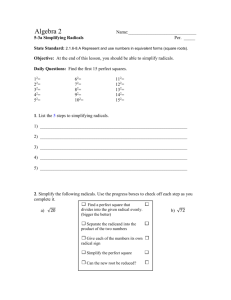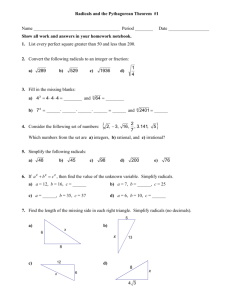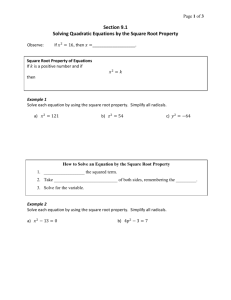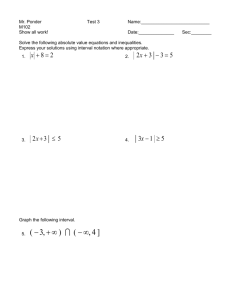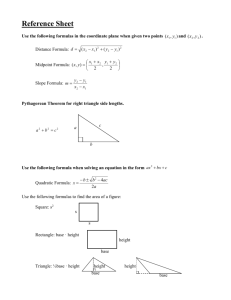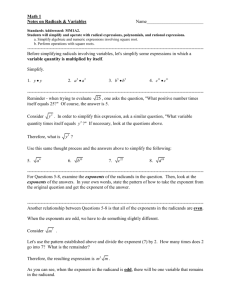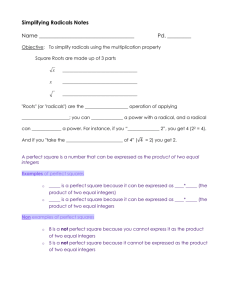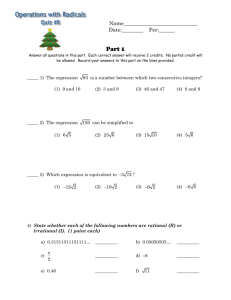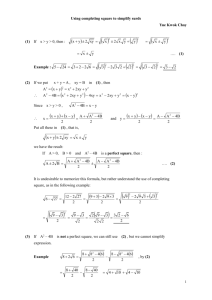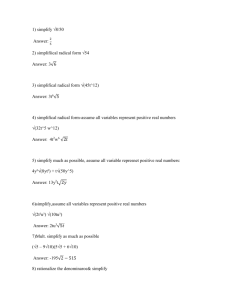Lesson 7.6 Notes Page
advertisement
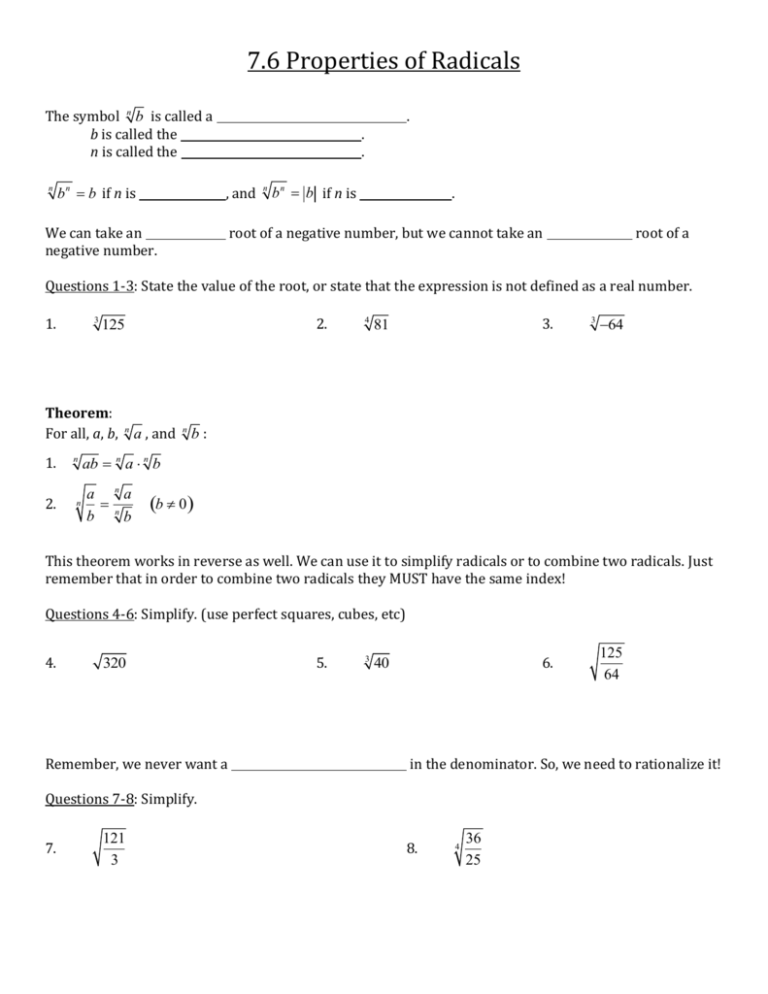
7.6 Properties of Radicals The symbol n b is called a b is called the n is called the n b n b if n is . . . , and We can take an negative number. n b n b if n is . root of a negative number, but we cannot take an root of a Questions 1-3: State the value of the root, or state that the expression is not defined as a real number. 1. 3 Theorem: For all, a, b, 1. 2. n n 2. 125 n a , and n 4 3. 81 3 64 b: ab n a n b a na b nb b 0 This theorem works in reverse as well. We can use it to simplify radicals or to combine two radicals. Just remember that in order to combine two radicals they MUST have the same index! Questions 4-6: Simplify. (use perfect squares, cubes, etc) 4. 320 Remember, we never want a 5. 3 6. 40 in the denominator. So, we need to rationalize it! Questions 7-8: Simplify. 7. 121 3 125 64 8. 4 36 25 Theorem: For all b and n n bm b , and m and n positive integers, b m n 9. Simplify. 4 812 Theorem: For k and m integers and all b and km b k m 10. Simplify. 8 km b, b mkb 36 Simplifying Roots with Variables To simplify a root with variables we divide the exponent on the variable by the index. The quotient is the exponent on the variable the radical, and the remainder is the exponent on the variable the radical. Questions 11-12: Simplify. 11. 3 12. 250x 8 192a11 Questions 13-18: Simplify. 13. 3 12b 14. 3 375 3 72 15. 3 320 50 16. 75a12 b 5 17. 5 32x10 y15 18. 3 24ab 6 z2
